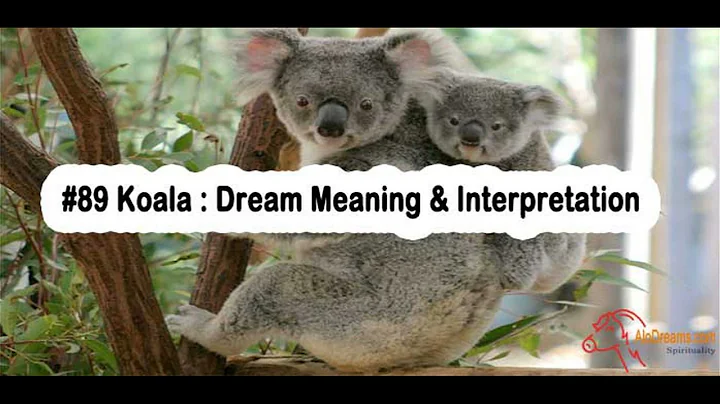Unraveling the World of Genre: A Guide for English Students and Teachers
Table of Contents
- Introduction
- The Definition of Genre
- Main Literary Genres
- Fiction
- Poetry
- Nonfiction
- Subgenres and Genre Combinations
- Action Movies
- Superhero Action Movies
- Parody Superhero Action Movies
- Analyzing and Describing Genre
- Gothic Novels
- Features of Gothic Novels
- Genre vs Medium
- Conclusion
📚 Introduction
Have you ever found yourself engrossed in a movie or book, completely invested in the characters and the storyline? In those moments, you may have experienced the recognition of a genre. Genre is a term that refers to the recurring elements found in various forms of media such as movies, books, television shows, and music. It helps us categorize and understand the types of content we consume. This article aims to delve into the concept of genre, explore different literary genres, examine subgenres and genre combinations, analyze and describe genre features, and differentiate between genre and medium.
📖 The Definition of Genre
Genre can be defined as "typified rhetorical action," which means that certain features repeat themselves over time with slight variations. This repetition occurs either because audiences have certain expectations or because they seek specific experiences from the content they consume. Genres help us distinguish and describe the categories of literature, films, and music that have developed over time. It is important to note that genres can differ across cultures and evolve over time, reflecting the changing interests and preferences of audiences.
📚 Main Literary Genres
The main categories of literary genres are fiction, poetry, and nonfiction. While these are the broadest categories, they provide a foundation for our understanding of genre.
Fiction: Fiction encompasses a wide range of storytelling that is created, rather than based on factual events. It can include novels, short stories, and plays. When reading fiction, we expect the narrative to be fictional, with imaginative plots and characters.
Poetry: Poetry is a form of literature that uses language to evoke emotions and convey unique meaning. It often follows specific structures, such as rhyme schemes or rhythm patterns, and utilizes figurative language to create vivid imagery.
Nonfiction: Nonfiction refers to factual writing that is based on real events, people, or ideas. It includes genres such as memoirs, biographies, essays, and instructional manuals. The defining characteristic of nonfiction is that it is based on reality rather than imagination.
📖 Subgenres and Genre Combinations
Genre becomes particularly intriguing when we explore the subgenres and combinations that exist within larger genres. For example, within the genre of action movies, we can find subgenres like superhero action movies, or even parodies of superhero action movies.
Action Movies: Action movies typically involve a protagonist who faces challenges and engages in physical combat or thrilling sequences. They often include elements like intense fight scenes and high-stake situations.
Superhero Action Movies: Superhero action movies are a specific subgenre of action movies that revolve around characters with extraordinary powers or abilities. These movies often feature a hero attempting to thwart a villain's plans and employ their superpowers to do so.
Parody Superhero Action Movies: Parodies are a unique aspect of genre exploration. These movies make fun of the expectations and conventions associated with a specific genre. For instance, the movie "Ant Man" combines elements of superhero movies, action, and comedy while satirizing the superhero genre as a whole.
📚 Analyzing and Describing Genre
Analyzing and describing genre allows us to delve deeper into the characteristics and features that define a genre. This process involves comparing and contrasting different works within a genre and examining how they adhere to or deviate from genre conventions. Let's take a closer look at a specific genre - gothic novels.
Gothic Novels: Gothic novels, such as "Frankenstein" by Mary Shelley or "Dracula" by Bram Stoker, encompass a specific genre known for its dark and mysterious themes. These novels often feature elements like creepy strangers, danger lurking in the shadows, haunted castles, and explorations of the sinister side of humanity.
Features of Gothic Novels: Analyzing a genre like gothic novels involves identifying the recurring features that define it. Some of these features include the use of metaphors that connect events to scary or dangerous things, foreshadowing of horrific events, flashbacks to terrifying past incidents that influence present actions. By recognizing these features, we gain a deeper understanding of the genre and its unique conventions.
📖 Genre vs Medium
It is crucial to differentiate between genre and medium, as they are not synonymous. While genre focuses on the recurring elements and conventions found within a specific type of content, medium refers to the form in which the content is delivered to the audience.
For example, a gothic novel is a specific genre, and the medium through which it is typically conveyed is a printed book. Similarly, a superhero movie is a genre, and the medium is film. Medium describes the technology or platform used to present the content but does not directly influence the genre itself.
📚 Conclusion
Understanding genre is a powerful tool for comprehending how narratives function across various forms of media. By recognizing the recurring features and distinguishing characteristics of genres, we can appreciate the patterns that emerge within stories and texts. Whether it's exploring the vast world of fiction, analyzing the intricacies of poetry, or unraveling the conventions of gothic novels, genre provides a framework for interpreting and appreciating the vast array of content that surrounds us.
Highlights:
- Genre is a term used to define recurring elements in various forms of media.
- The main literary genres are fiction, poetry, and nonfiction.
- Subgenres and genre combinations, such as superhero action movies and parodies, add further depth to the exploration of genre.
- Analyzing genre involves comparing and contrasting works to understand how they adhere to or deviate from genre conventions.
- Genre should not be confused with the medium through which content is delivered.
- Understanding genre enhances our comprehension and appreciation of narratives and storytelling.
FAQs
Q: What are the main literary genres?
A: The main literary genres are fiction, poetry, and nonfiction.
Q: Can genre evolve over time?
A: Yes, genre can evolve over time as audience preferences and cultural influences change.
Q: How does parody contribute to our understanding of genre?
A: Parodies satirize and make fun of the expectations and conventions associated with a particular genre, allowing us to examine genre conventions from a different perspective.
Q: What is the difference between genre and medium?
A: Genre focuses on the recurring elements and conventions within a specific type of content, while medium refers to the form through which the content is delivered.
Q: How does understanding genre enhance our appreciation of stories?
A: Understanding genre allows us to recognize patterns and conventions within narratives, leading to a deeper understanding and appreciation of storytelling techniques.







